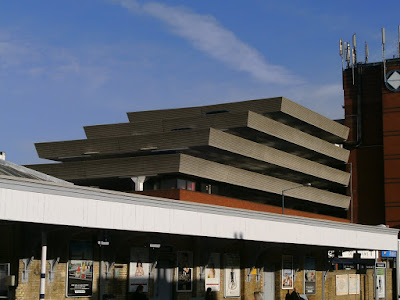Gravesend is a town in Kent that was once a major destination for paddle steamers coming down the Thames from London, and stands opposite Tilbury. Gravesham is derived from the office of Portgreve (or Portreve) and, as is usual Ham means homestead, so Gravesham is the home of the portgreve, the port having disappeared (as port is inclined to do when I'm around). The name is nothing to do with graves for plague victims or burial at sea.
Being opposite the Tilbury docks there is often shipping and here is a picture of a ship passing the Royal Terrace Pier which is owned and locked up by the Port of London Authority. It was built in 1842 and acquired its royal connection when Princess Alexandra of Denmark disembarked here on her way to marry Albert Prince of Wales, son of Queen Alexandrina. Subsequantly Prince Albert became King Albert I in 1901 and dies in 1910.
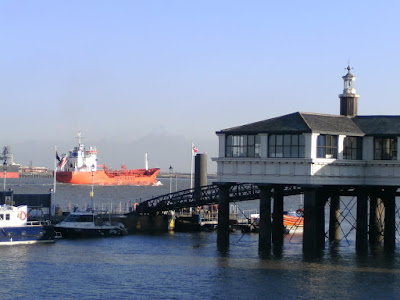
The oldest building in Gravesend is the Milton chantry. Chantries were chapels where masses were said for the dead who were said to be in purgatory - a kind of intermedieate state between heaven and hell totally made up by the Roman Catholic church. At the reformation, the reformers, having found no evidence of purgatory in the bible, closed the chantries. Eventually the Milton Chantry became a barracks and a battery to defend the thames was maintained from the time of King Henry VIII and it looks as though it could be brought back into operation at fairly short notice as the world war two guns are still present.
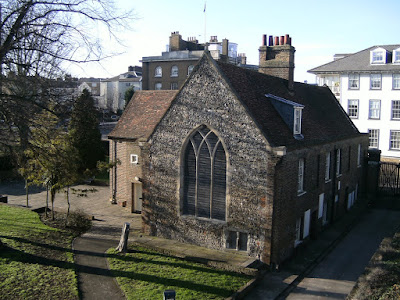
Religious life in the town is provided by St George's Church, an 18th century structure built after a fire in the town. The church has a good 18th century interior although changed by liturgical innovations of the 19th century.
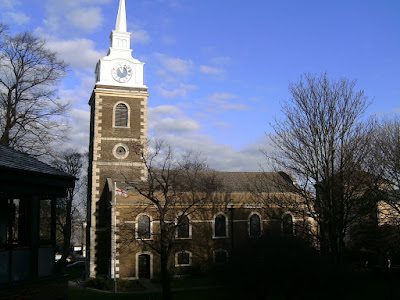
Famous people in Gravesham are firstly Rebecca Wrolfe who began life as princess Pocahontas (which I pronounce Pock-a-hontas in the English way - no poking please). She was a great help to the English settlers of Virginia, converted to Christianity and married a tobacco planter John Wrolfe. Princess Pocahontas came to England and was entertained by royalty, but she fell ill and died, and was buried in the chancel of the Gravesend church that burned down. Her statue is in the churchyard.
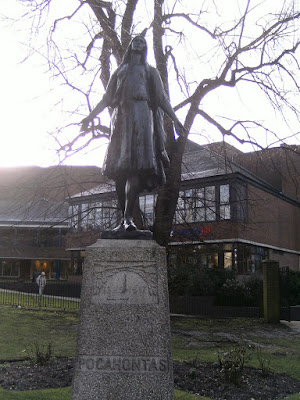
General 'Chinese' Gordon also lived in the town for 6 years as commander of the battery. During this time he established a mission to the poor and a reading room where he taught poor children to read. General Gordon's military career needs no introduction from me. His statue is in the riverside park that bears his name.
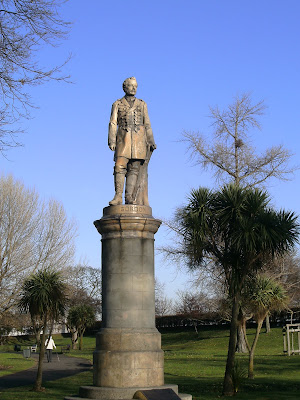
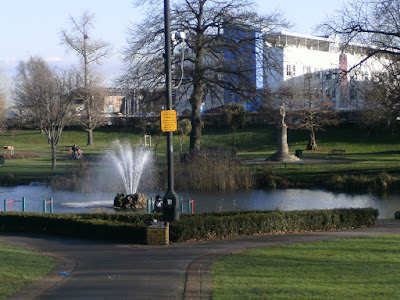
On my last visit to Gravesend I saw some idiot run over the 650-850v DC electrified track - four sets of rails. I hope he was arrested straight away on coming up. Thankfully nobody did that this time but this sculptural car park is best viewed from the station
